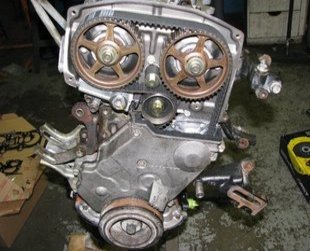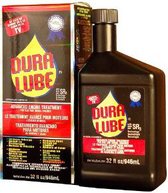
Engine diagnosis overview and how to evaluate automotive engine problems. The Information to follow can help shed some light on common engine problems. Also view a short video at the bottom about cylinder damage and what it takes to repair it.
Once you run an compression test, cylinder leakage, vacuum, oil pressure and power balance tests a do it yourself auto mechanic is ready to evaluate the engine’s overall condition. How to perform each test can be found at the bottom of the automotive engine module start page right here on this site.
As an example an engine with decent compression readings, but high cylinder leakage past the rings is a typical sign of a worn engine from high mileage. In addition an engine with high mileage may show these symptoms as well, excessive blow by from the valve cover vent, lack of power, or engine smoking and reduced fuel economy.

Diagnosing a vehicle with low mileage is a little different. If these same compression and leakage test results are found on automotive engines with comparatively low mileage the problem can be a stuck piston ring or a ring that is not expanding properly.
The rings are suppose to float freely in the piston land. If it binds this is considered a problem. If this is the case you can try treating the engine with a combustion chamber cleaner, engine oil treatment or performing an engine flush.
This will only solve piston ring problems caused by carbon buildup in the piston ring lands. If this fails to correct the problem you may be looking at a complete engine overhaul. It is worth trying these engine oil additives but in most cases they are not effective. But the reviews on the Dura lube product on the right are inspiring.
A cylinder that has poor compression but very little leakage indicates a possible valve train problem. In this instance a valve might not be opening at the right time, might not be opening enough, or might not be opening at all.
You can verify this condition on motors with push rod type designs by pulling the rocker cover and watching the valves operate while the engine is turned over manually or with a remote starter switch while the ignition and fuel systems are disabled. If one or more valves failed to move either the lifters are collapsed or the cam lobes or worn.
If all the cylinders have low compression with minimal leakage, the most likely cause is incorrect valve timing. A timing belt or even a chain can slip and open the valves at the wrong time. This can give you a very low compression reading and extremely poor performance and fuel economy as well as rough running and lack of power.
If compression and leakage are both good but the power balance test. reveals weak cylinders the cause of the engine problem is outside the combustion chamber. The first thing to verify is that there are no ignition or fuel problems which would be the most common.
However, hard parts like broken valve train components or collapsed lifters can cause engine problems that show up on a balance test. When performing engine diagnosis for weak cylinders a leaking intake manifold or excessive clearance in the valve guides can also cause imbalances.
If you suspect that the valve guides are worn. You can squirt some engine oil on top of the guides and then performed the test again. Also note that if the valve guides are shot and you squirt some oil on them and then start the engine safely lots of blue smoke will be seen from the exhaust system.
Blue smoke is a sign of engine oil being burnt where as gray or white exhaust indicates either a fuel system problem or in the case of heavy white smoke possible coolant leaks into the combustion chamber.
Heavy black smoke is a sign of a rich fuel mixture. I have details for you on how to perform each individual engine diagnosis procedure mentioned above. This next link takes you to the automotive testing section from this overview about engine diagnosis If you would like to talk to a mechanic about your automobile engine problems the Internet can make this happen. Get some car repair help right now! Bookmark or share this automobile engine repair video with friends.
We have a large collection of how to videos on a wide variety of car repair subjects. Some of these I made my self and some are from video sharing sites. The next page is full of auto repair videos. If you plan on taking apart the engine on your own vehicle I highly recommend you get a manual for it. This next page has a video of the online factory car repair manuals I use.
If you would like more information about what automobile repair information is available on the you fix cars website the homepage is up next. This is also where you can find out more about the car mechanic that provides auto repair advice.

